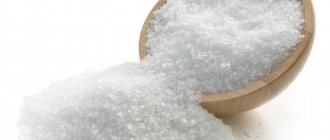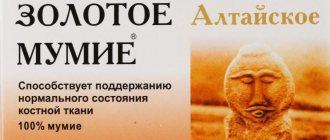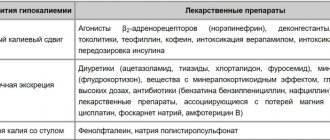The role of potassium in plant development
Potash fertilizers are the main source of plant nutrition in cultivated areas. Organic matter contains a large amount of this macronutrient, but organic fertilizers are expensive, especially if you grow produce for sale every year. Therefore, mineral mixtures and one-component formulations come to the rescue.
If there is a deficiency of potassium nutrition in the soil, this can be determined by the leaves - they dry out, starting from the edges, then necrotic spots appear and the leaf dries out completely.
This is the first signal to add potassium chloride - what it is and why plants need it.
This is a “fast” potassium fertilizer that goes into the soil and eliminates the deficiency within 2 – 3 days. The instructions for using potassium chloride fertilizer indicate the dosage and method of application, but in addition to this, you need to know the nuances of how and when to use it so as not to harm the crops.
The main role of potassium is in the filling and ripening of fruits. Due to their presence in the soil, vegetable crops have the correct “marketable” shape, are fleshy and evenly colored.
The taste of properly grown vegetables, fruits and berries is different from those that were not given additional nutrition. They are sweeter and have a strong aroma. After harvesting, not all products are capable of long-term shelf life. The one grown with potassium supplements is more resistant to transportation and storage in a warehouse.
Types of potash fertilizers
Among potash fertilizers there are those that do not contain chlorine. Of these, the most famous is potassium sulfate. This fertilizer can be used at any time of the year - in spring, summer or autumn for digging.
Potassium nitrate - a combined nitrogen fertilizer with potassium ions in its composition - is also suitable for eliminating macronutrient deficiency.
The most common and cheapest fertilizer is granulated potassium chloride. It is used by both collective and private farms. The formula of potassium chloride is KCl - it contains a poisonous gas and an alkali metal. In appearance it is transparent granules or a smaller fraction - powder, highly soluble in water.
The solubility of potassium chloride, as well as hygroscopicity, is very high, so the substance must be stored in a closed container in a dry room.
Application
- Potassium chloride is used for the production of KOH, KCO3, KClO4, KNO3 and other potassium compounds.
- In agriculture, potassium chloride is a common potash fertilizer.
- In the food industry, sodium chloride is used as an additive (E508) to table salt (“reduced sodium salt”).
- In medicine, solutions of potassium chloride are used orally or intravenously in cases of potassium deficiency in the body (for example, during treatment with diuretics, prolonged vomiting), in case of heart rhythm disturbances, etc.
Potassium ions play a very important role in regulating body functions. Potassium salts are quickly excreted by the kidneys. Like other potassium salts, potassium chloride has a moderate diuretic effect.
Properties of potassium chloride
The ratio of potassium chloride in powder or granules may be different. The exact quantity is indicated in the instructions. Most often, the percentage of active substance ranges from 55 to 65, but there are fertilizers with a high degree of purification - up to 98%. The composition may contain various impurities.
This is not at all bad for plants, since along with macroelements they receive the necessary microcomponents for nutrition and immunity. For example, sulfur gives fertilizer its pink color.
Enrichment of potash ore occurs at large fertilizer plants, where potassium chloride is obtained from the mineral sylvinite in two ways - flotation and halurgic. In the first case, the minerals are crushed and treated with water. Potassium chloride is separated and collected separately from the ballast.
In the second case, a chemical reaction occurs with heating of the solution with which sylvinite is treated. A completely chemical method for obtaining a substance is possible, in which potassium hydroxide is combined with hydrochloric acid. The result is potassium chloride fertilizer, which is used for medical purposes, as it has a high degree of purification.
Receipt
Natural sources
In nature, potassium chloride can be found in the form of the minerals sylvite KCl and carnallite KCl MgCl2 6H2O, and it is also found in the rock sylvinite KCl NaCl. Potassium chloride is isolated from sylvinite using the difference in its solubility in hot and warm water, or by flotation .
Obtained in the laboratory
Potassium chloride is prepared in the laboratory from potassium hydroxide and hydrochloric acid:
KOH + HCl = KCl + H2O.
Advantages and disadvantages of fertilizer
The benefits of mineral nutrition include:
- high degree of solubility in water, which allows it to be evenly distributed in the soil when watering;
- different fractions suitable for both dry incorporation into the soil and for irrigation;
- easily digestible form of nutritional components.
Many gardeners believe that chlorine is harmful to plants and do not buy this fertilizer. But everyone else knows that chlorine is a gas that disappears when the mineral decomposes in the soil. At the same time, potassium remains in the soil and works for the crop. Therefore, this disadvantage can be considered relative.
To completely eliminate the harmful effects on plants, most of which react negatively to chlorine, mineral fertilizer is applied in the fall before digging. During the winter it manages to dissolve and by spring it is already in the soil in an easily digestible form.
At the same time, it is not recommended to use chlorides constantly, as they cause negative changes in the soil. Fertilizers should be changed, alternating, for example, sulfate with potassium magnesium, cement dust, ash or compost.
Video: Pros and cons of fertilizer
The soil is fertilized with potassium chloride 3 to 4 months before the intended planting to give time for the gas to dissipate. If there are a sufficient number of microorganisms in the soil, the decomposition process will go faster.
Example of problem solution
Determine the boiling point of a concentrated (at 100°C) solution of potassium chloride. At 100°C, 56.7 g of potassium chloride dissolves in 100 g of water.
Solution
Let's make a proportion:
56.7 g KCl – 156.7 g solution, x g KCl – 1000+x g solution,
From here
156, 7 ⋅ x = 56700 + 56, 7 ⋅ x 156.7 \cdot x=56700+56.7 \cdot x 156.7⋅x=56700+56.7⋅x
100 ⋅ x = 56700 100 \cdot x = 56700 100⋅x=56700
x = 56700 100 = 567 x=\frac{56700}{100} = 567 x=10056700=567 g.
1 mole of KCl – 74.555 g, x moles of KCl – 567 g.
From here
x = 567 ⋅ 1 74 , 555 = 7 , 60 x=\frac{567\cdot1}{74.555} = 7.60 x=74.555567⋅1=7.60 mol.
When KCl dissociates according to the scheme KCl ↔ Cl- + K+, i = 2 ions are obtained.
Table value for water E = 0.51 K.
Then the increase in boiling point of the solution:
Δ t k and p = i ⋅ E ⋅ C = 2 ⋅ 0, 51 ⋅ 7, 60 = 7, 75 \Delta t_{kip}=i\cdot E \cdot C =2\cdot 0.51 \cdot 7, 60=7.75 Δtboil=i⋅E⋅S=2⋅0.51⋅7.60=7.75K.
Hence t k and p = 100 + 7, 75 = 107, 75 t_{kip} =100+7.75=107.75 tkip=100+7.75=107.75 °C.
Answer: tk and p = 107.75 t_{kip} =107.75 tkip=107.75 °C.
Which plants do not tolerate chlorine?
Potassium chloride fertilizer is not used in the garden for cucumbers and potatoes. These crops stop developing normally - the leaves dry out and curl, and the stems become coarser.
Potato tubers do not synthesize starch well, so the resulting product can be of low quality. To revive the plantings, they are fed with a solution of microelements, nitrogen substances, and magnesium. If the soil is very acidic, a solution of ash or adding lime will not hurt.
Tomatoes and peppers also do not like chloride fertilizing, but here it’s more about the amount of substance that gets into the soil, since infrequent fertilizing with potassium chloride strengthens the immunity of tomatoes.
Garlic and onions, as well as cruciferous vegetables - radishes, cabbage, radishes do not tolerate chlorinated water. They prefer potassium sulfate to potassium chloride. If the gardener has gone too far with the amount of chemical, it is urgent to add dolomite flour containing magnesium, porous vermiculite or charcoal, which retains harmful substances.
It is not advisable to apply potassium chloride to carrots in the spring, although beets are neutral to it. Berry crops and grapes may not set berries if you apply fertilizer with chlorine in the spring. They all prefer potassium sulfate as an emergency feeding.
Signs of excess potassium
Perennial plants - trees, shrubs - react with poor wintering when potassium chloride is applied in excess. Their buds freeze and the roots may begin to rot. An urgent replanting or liming of the soil underneath is required.
Seedlings of annual plants react by lodging. They also often have the disease “black neck”.
Effect on the human body: is potassium chloride in products dangerous or not?
Based on the intensity of its impact on the body and human health, the substance is classified as moderately hazardous (class 3).
Is there any benefit?
- In small quantities, the substance has a positive effect on the functioning of the heart, blood vessels and synthesizes protein in metabolic processes.
- In small doses, E508 restores potassium deficiency in the body.
- Normalizes the acid-base balance.
- It is a conductor of nerve impulses in the body and causes muscle contraction.
Important. The product is easily absorbed into the walls of the stomach, and the remains are excreted through the kidneys.
Possible harm and precautions
Precautions are necessary when storing potassium chloride. The room in which the product is stored must be dry and thoroughly ventilated. If a significant amount of the substance suddenly comes into contact with the skin or other organs, the following first aid measures should be taken:
| If swallowed | Rinse your mouth thoroughly with water, then drink a significant amount of liquid. |
| If the substance is inhaled | If you inhale the product, you must go out into fresh air. |
| Upon contact with skin | Rinse the skin at the affected area with plenty of water. |
| If in eyes | Immediately rinse your eyes with water and contact a specialist if there is painful irritation of the mucous membranes. |
| General recommendations | Be sure to contact a medical professional if your condition worsens. |
The food supplement in small proportions is safe, but a significant amount of potassium chloride consumption can lead to serious consequences:
- cardiac arrhythmias;
- weaknesses;
- speech and consciousness disorders;
- bronchospasms.
Important! Intoxication with potassium salts can be fatal.
Acceptable Daily Intake (ADI)
There is no established daily intake for the food additive E508 (potassium chloride).
Autumn feeding
Potassium chloride is used in much larger quantities in the fall than in the spring. If up to 200 g of the substance is applied per hundred square meters of land in the fall, then in the spring 25 g per 10 sq. m. is sufficient. m.
The composition of the soil should be taken into account. The fact is that loams are soils rich in potassium ions, so there is no need to apply the entire dosage - half is enough. If the plants do not show signs of potassium starvation, there is no need to overdo it.
Potassium deficiency is constantly observed on peat soils. Here, fertilizing alone will not do - potassium chloride must be applied during all periods of the growing season - spring, summer and autumn in order to get a good harvest.
Sandy soils are well ventilated, because of this, chlorine disappears faster, but fertilizing with potassium chloride is carried out more often in small dosages.
Instructions and use of chloride fertilizers
To save on mineral fertilizers, without harming the crops at the same time, you need to make it a rule to use potassium chloride only in the fall. In this case, there is no need to make a solution and pour it under the root - you can simply scatter the granules evenly on the ground and dig it up. It is important that the substance gets into the root system area, where it will remain until spring.
For open ground plants
For open ground plants, it is recommended to apply potassium chloride to cereals, corn, and beets at any time of the year. These beds can be prepared in the fall by mixing potassium fertilizer with phosphorus - superphosphate or phosphate rock.
A good option is to combine mineral components with humates, which are now produced by many companies. Humic fertilizers prevent the soil from becoming salty and stimulate colonies of microorganisms to multiply. After chloride fertilizing, you can organize watering with a humic solution.
Greenhouse plants need potassium much more than those growing outdoors. You need to fertilize 4 months before the intended planting or combine potassium chloride with other fertilizers, for example, potassium magnesia.
If the greenhouse is not used every year, then the timing of fertilizing does not play a role - you can take a break from planting and dig up the soil with chlorine fertilizer. This can help in the fight against fungal diseases and disinfect the soil.
Pure white potassium powder can be used for foliar sprays. What about chlorine? There are situations when all the seedlings begin to dry out at one moment. Here the toxic element is no longer so important as the need to save the plants. When they receive the necessary nutrition, you can choose another fertilizer or feed the seedlings with microelements.










